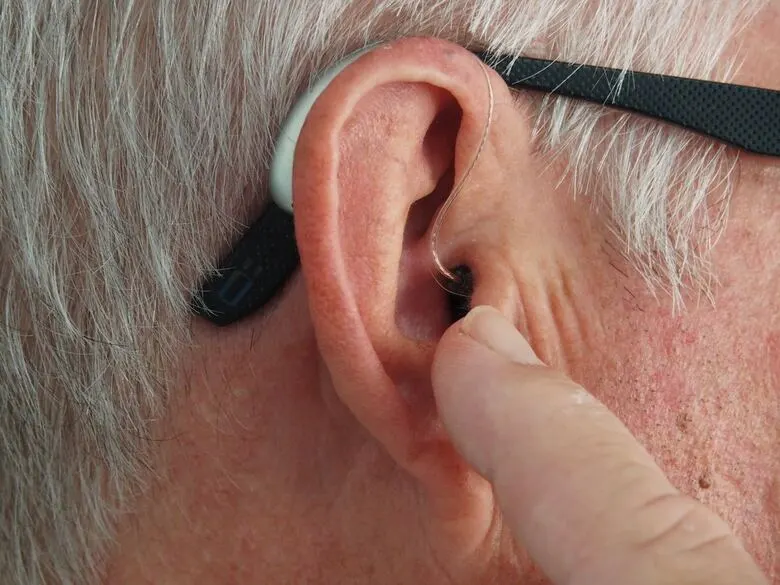The world of hearing aids has transformed remarkably over the past few decades. Once bulky and imprecise, today’s devices are shaped by state-of-the-art technologies, with seniors at the forefront of this innovation.
As the age-related hearing loss population grows, scientists and engineers work diligently to address unique challenges and deliver unparalleled auditory experiences.

Table of Contents
Digital Advancements in Sound Processing
The shift from analog to digital in hearing aids marks one of the most significant evolutions in the auditory assistance industry.
This transition has enabled sophisticated sound processing that can differentiate between various noise types and amplify them differently. With digital technology, hearing aids have turned into intelligent devices capable of making real-time decisions to enhance the user’s auditory experience.
- Precision Auditory Mapping: Leveraging intricate algorithms, modern hearing aids distinguish between varying sound frequencies. This ensures that background noises don’t overpower essential sounds like conversations, offering a crystal-clear listening experience.
- Directional Microphones: Equipped with sensors, these microphones can pinpoint the origin of sounds. By doing so, they enable the hearing aids to amplify voices from a specific direction, reducing background noises and improving face-to-face conversations.
- Adaptive Volume Control: This feature utilizes real-time environmental feedback to adjust volume levels. As surrounding noise intensities fluctuate, the hearing aid responds, ensuring consistent auditory input and reduced strain on the wearer.
- Layered Sound Processing: By segregating sound layers, this feature enables priority to certain sound frequencies. This means that while in a café, for instance, the chatter and clinking of cups become the background, while the conversation at your table remains clear and pronounced.
Battery Life and Power
The essence of a functional device often lies in its power management. As technology has advanced, so too has the efficiency of battery usage.
Modern hearing aids benefit from these advancements, offering longer life and more reliability, ensuring that the user remains connected without frequent interruptions.
- Rechargeable Solutions: Lithium-ion batteries not only promise longer battery life but also come with the assurance of durability. Many devices provide an entire day’s charge within a couple of hours, removing the inconvenience of frequent charging.
- Solar-Powered Options: These are a boon for those on the move. By absorbing sunlight, these hearing aids can extend battery life, proving especially useful during outdoor activities or trips.
- Low Power Consumption: Advanced power management systems in hearing aids optimize usage. This means devices can now provide enhanced performance without rapidly depleting the battery.
- Quick Charging: Not only do these solutions power devices rapidly, but many also offer “quick bursts” of power, giving users a few hours of use with just a few minutes of charging.
Ergonomics and Discretion
User comfort and discretion have always been pivotal in hearing aid design. As the demographic of users widens and diversifies, the industry has made significant strides in ensuring that devices are not just functional but also aesthetically pleasing and comfortable. This balance is crucial to ensure long-term use and satisfaction.
- Invisible-in-Canal (IIC) Models: Designed to be unobtrusive, these hearing aids sit deep within the ear canal. Apart from their cosmetic advantage, they also offer a natural listening experience by utilizing the ear’s acoustics.
- Behind-The-Ear (BTE) Modernizations: Contemporary BTE designs are more streamlined and lightweight. Materials used are also hypoallergenic, ensuring reduced skin reactions and increased comfort.
- Comfort Materials: Beyond being soft, these materials breathe, reducing moisture and ensuring the device remains snug without causing discomfort.
- Adaptive Designs: These designs ensure the device molds to the ear’s unique shape. Over time, wearers often forget they have the device on, thanks to the snug fit and adaptive materials.
Tailoring to Individual Needs
Each individual’s hearing loss is unique, and so are their preferences and lifestyles. The one-size-fits-all model is outdated. Now, hearing aids can learn, adapt, and offer personalized experiences that cater to specific user requirements, ensuring holistic care and satisfaction.
- Automatic Scene Detection: This AI-driven feature assesses the auditory environment. Whether in a concert or a library, the device will calibrate itself for optimal performance.
- Tinnitus Masking: These specialized features offer a range of soothing sounds. From white noise to natural sounds, users can choose their masking sound, alleviating the discomfort of tinnitus.
- Hearing Health Tracking: Beyond amplification, some hearing aids now track auditory health over time. This data can be invaluable for audiologists to assess hearing trends and recommend interventions.
- Voice Clarity Enhancement: Advanced filtering ensures that human voices are crisp. Even in bustling environments, conversations remain clear, with reduced interference from ambient noises.
Natural Sound Enhancement
Amplifying sound is just one facet of hearing aid functionality. The quality of amplified sound, its clarity, and its naturalness are equally vital. Contemporary devices ensure that the user’s auditory experience is as close to natural hearing as possible, accounting for various challenges that can distort or degrade sound quality.
- Wind Noise Reduction: Advanced shields and digital algorithms work together. They identify and suppress wind noise, ensuring it doesn’t overpower essential sounds.
- Feedback Cancellation: Through rapid detection and suppression, this feature nullifies feedback before it becomes audible. This ensures a whistle-free experience, even when adjusting the device or coming close to objects.
- Natural Sound Preservation: Sophisticated processing ensures sounds remain true to their source. Be it a bird’s chirp or a loved one’s laughter; the sound remains pure and untainted.
- Dynamic Range Management: By balancing extremes, this feature ensures soft sounds are audible and loud sounds are not jarring. It guarantees a consistent and comfortable auditory experience across varying environments.
Conclusion
Today’s hearing aids for seniors are a culmination of decades of scientific research, technological advancements, and an understanding of user needs.
The result is a suite of devices that offer not just amplified sound but an enhanced quality of life. As science and technology continue to break boundaries, one can only anticipate even more refined, efficient, and personalized solutions in the near future.
For now, seniors have access to some of the best auditory aids ever designed, ensuring that age-related hearing loss is but a minor setback in their vibrant journey of life.
For a curated list of the best hearing aids available now, be sure to check out this article by Wish TV about the best hearing aids for seniors. For now, seniors have access to some of the best auditory aids ever designed, ensuring that age-related hearing loss is but a minor setback in their vibrant journey of life











Leave a Reply